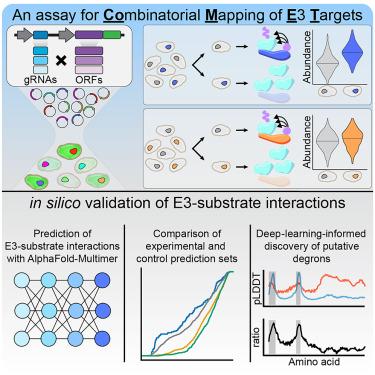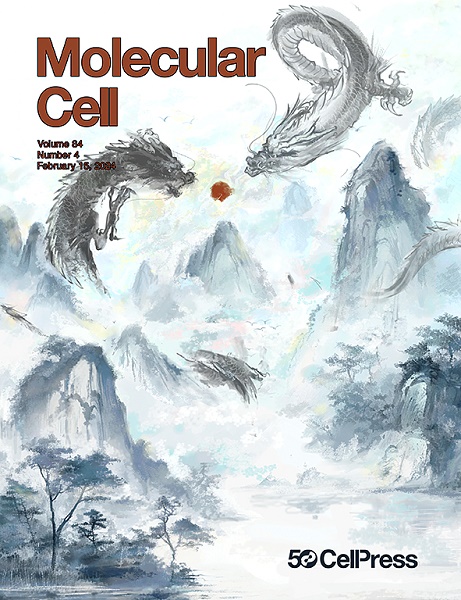Combinatorial mapping of E3 ubiquitin ligases to their target substrates
IF 14.5
1区 生物学
Q1 BIOCHEMISTRY & MOLECULAR BIOLOGY
引用次数: 0
Abstract
E3 ubiquitin ligases (E3s) confer specificity of protein degradation through ubiquitination of substrate proteins. Yet, the vast majority of the >600 human E3s have no known substrates. To identify proteolytic E3-substrate pairs at scale, we developed combinatorial mapping of E3 targets (COMET), a framework for testing the role of many E3s in degrading many candidate substrates within a single experiment. We applied COMET to SCF ubiquitin ligase subunits that mediate degradation of target substrates (6,716 F-box-ORF [open reading frame] combinations) and E3s that degrade short-lived transcription factors (TFs) (26,028 E3-TF combinations). Our data suggest that many E3-substrate relationships are complex rather than 1:1 associations. Finally, we leverage deep learning to predict the structural basis of E3-substrate interactions and probe the strengths and limits of such models. Looking forward, we consider the practicality of transposing this framework, i.e., computational structural prediction of all possible E3-substrate interactions, followed by multiplex experimental validation.

求助全文
约1分钟内获得全文
求助全文
来源期刊

Molecular Cell
生物-生化与分子生物学
CiteScore
26.00
自引率
3.80%
发文量
389
审稿时长
1 months
期刊介绍:
Molecular Cell is a companion to Cell, the leading journal of biology and the highest-impact journal in the world. Launched in December 1997 and published monthly. Molecular Cell is dedicated to publishing cutting-edge research in molecular biology, focusing on fundamental cellular processes. The journal encompasses a wide range of topics, including DNA replication, recombination, and repair; Chromatin biology and genome organization; Transcription; RNA processing and decay; Non-coding RNA function; Translation; Protein folding, modification, and quality control; Signal transduction pathways; Cell cycle and checkpoints; Cell death; Autophagy; Metabolism.
 求助内容:
求助内容: 应助结果提醒方式:
应助结果提醒方式:


